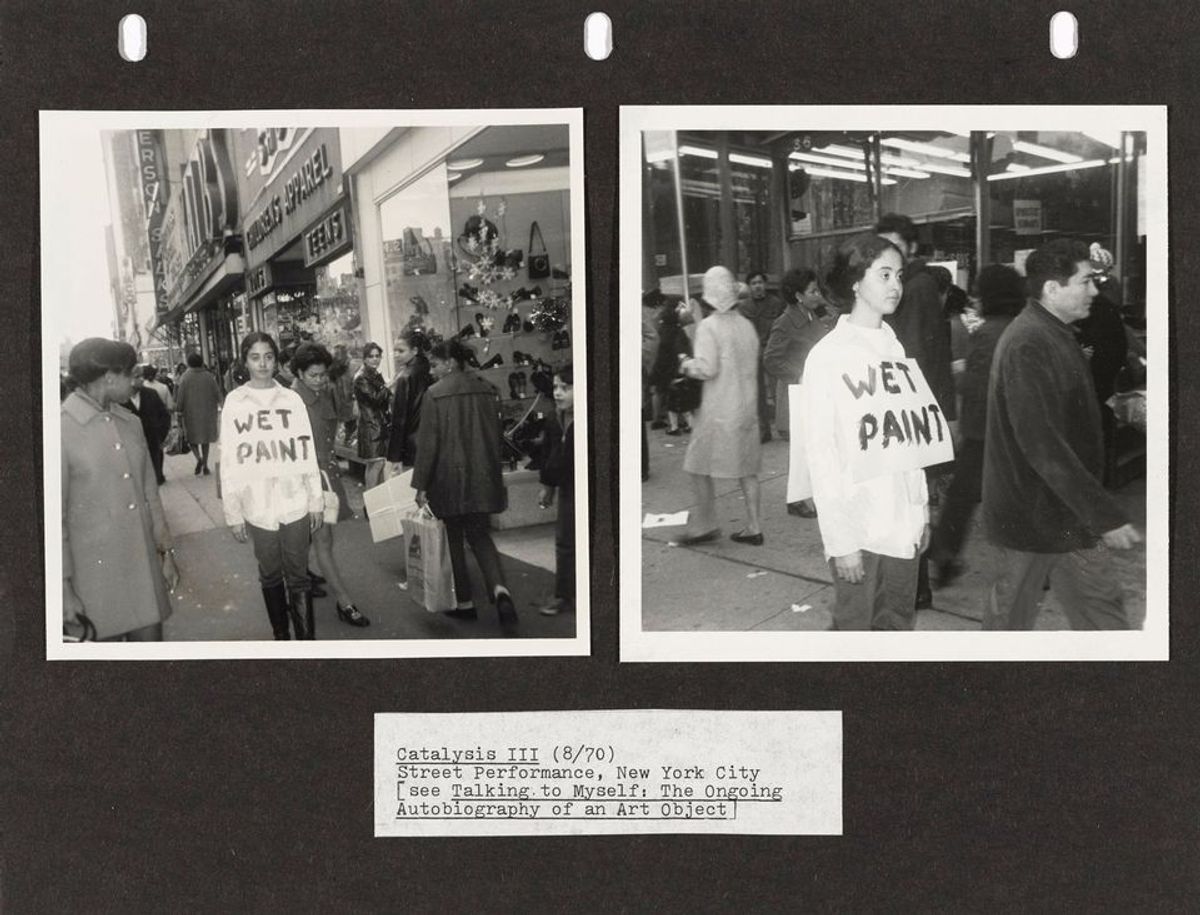When you see Adrian Piper: a Synthesis of Intuitions, 1965-2016 (until 22 July) at the Museum of Modern Art, you will know why MoMA gave over its entire sixth floor (and some of the lobby) to the show—a first for a living artist. It takes that much space to cover the breadth of Piper’s work, which began with Conceptualism in the 1960s before morphing into socially engaged art looking at race and otherness. Performance, video, sound, installation and drawing are among the media presented. Catalysis III (1970), in which Piper shopped at Macy’s department store wearing clothing painted with sticky white paint and a “wet paint” sign, is among the artist’s most memorable performances shown through documentation, while visitors become performers in participatory works like Humming Room (2012), in which they must hum a tune to pass through a space.
The International Center for Photography (ICP) looks at the US government’s mass imprisonment of 120,000 Japanese Americans during the Second World War in the exhibition Then They Came for Me (until 6 May). Around 100 images by documentary photographers like Dorothea Lange and Ansel Adams, and works by incarcerated artists Toyo Miyatake and Miné Okubo, bear witness to this shameful period in US history. Lange was an early recruit of the War Relocation Authority (WRA), the agency in charge of the displacement that sought to use photography in its propaganda efforts—but her work was deeply sympathetic and opposed to the incarceration. Miyatake, held at Manzanar in California from 1942 to 1945, gives a more direct look at daily life in the camps, capturing the barbed wire fences and guard towers that Lange was forbidden to document.
Head to the Doris C. Freedman Plaza at the south-east entrance to Central Park to see a colourful 21st-century alternative to the city’s contested historic monuments: a new fibreglass sculpture by the British-Nigerian artist Yinka Shonibare MBE, Wind Sculpture (SG) I, a Public Art Fund commission (until 14 October). This is the first in a new “generation” of Shonibare’s “Wind Sculptures”, which resemble fabric blowing in the breeze, hand-painted to look Dutch wax batik prints, and tap into themes like colonialism, cultural identity and migration. “At a time when one of the sensitive subjects of the moment is the issue of immigrants, this work is a good metaphor for that movement of people, but also visually very engaging,” the artist says.


